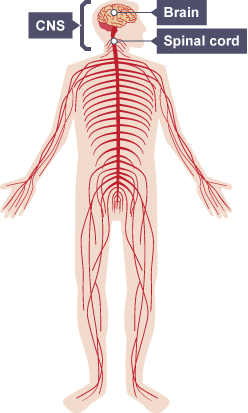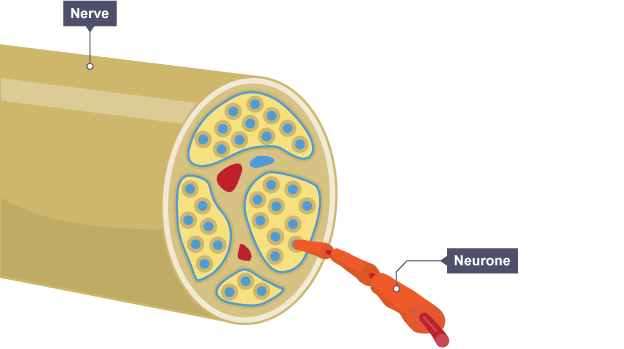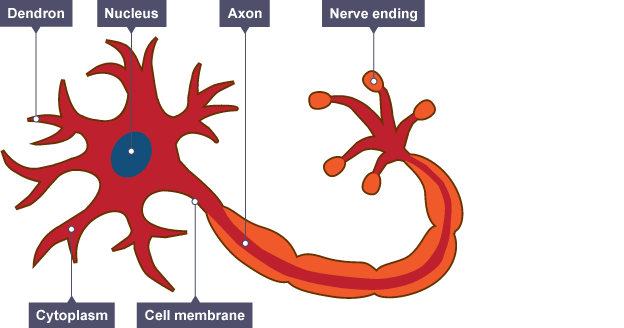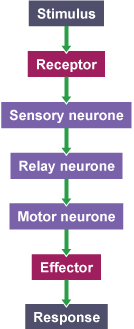AQA GCSE Biology Trilogy: Homeostasis
Homeostasis:
Homeostasis maintains optimal conditions for enzyme action throughout the body, as well as all cell functions. In the human body, these include the control of -
- blood glucose concentration
- body temperature
- water levels
These automatic control systems may involve nervous responses (nervous system) or chemical responses (endocrine system).
The Nervous System:
The human nervous system consists of -
the central nervous system
- the brain and spinal cord
the peripheral nervous system
- nerve cells that carry information to and from the CNS

Control Systems:
All control systems include -
- Cells called receptors, which detect stimuli (changes in the environment).
- The coordination centre, such as the brain, spinal cord or pancreas, which receives and processes information from receptors around the body.
- Effectors bring about responses, which restore optimum levels, such as core body temperature and blood glucose levels. Effectors include muscles and glands, and so responses can include muscle contractions or hormone release.
Nerve Cells:
Nerve cells are called neurones. They are adapted to carry electrical impulses from one place to another. A bundle of neurones is called a nerve.

There are three main types of neurone - sensory, motor and relay. They have some features in common -
A long fibre (axon) which is insulated by a fatty (myelin) sheath. They are long so they can carry messages up and down the body.
Tiny branches (dendrons) which branch further as dendrites at each end. These receive incoming impulses from other neurones.

Receptors to Effectors:
Information from receptors passes along neurones as electrical impulses to coordinators, such as the central nervous system (CNS). The CNS is the brain and spinal cord. Muscles contracting or glands secreting hormones are the response of effectors coordinated by the CNS.
Stimulus → receptor → coordinator → effector → response

Receptors:
Receptors are groups of specialised cells. They detect a change in the environment (stimulus) and stimulate electrical impulses in response. Sense organs contain groups of receptors that respond to specific stimuli.
| Sense organ | Stimulus |
|---|---|
| Skin | Touch, temperature and pain |
| Tongue | Chemicals (in food and drink, for example) |
| Nose | Chemicals (in the air, for example) |
| Eye | Light |
| Ear | Sound and position of head |
Effectors:
Effectors include muscles and glands that produce a specific response to a detected stimulus, for example -
- a muscle contracting to move an arm
- muscle squeezing saliva from the salivary gland
- a gland releasing a hormone into the blood
Reflex Arcs:
There are different types of neurones that work together in a reflex action. This creates an automatic and rapid response to a stimulus, which minimises any damage to the body from potentially harmful conditions, such as touching something hot. A reflex action follows this general sequence and does not involve the conscious part of the brain, which makes it much quicker -

The nerve pathway followed by a reflex action is called a reflex arc. For example, a simple reflex arc happens if we accidentally touch something hot.

The receptor in the skin detects a stimulus (the change in temperature).
The sensory neurone sends electrical impulses to the relay neurones, which are located in the spinal cord. They connect sensory neurones to motor neurones.
The motor neurone sends electrical impulses to an effector.
The effector produces a response (muscle contracts to move the hand away).

Where two neurones meet there is a small gap, a synapse.
- An electrical impulse travels along the first axon.
- This triggers the nerve-ending of a neurone to release chemical messengers called neurotransmitters.
- These chemicals diffuse across the synapse (the gap) and bind with receptor molecules on the membrane of the second neurone.
- The receptor molecules on the second neurone bind only to the specific neurotransmitters released from the first neurone. This stimulates the second neurone to transmit the electrical impulse.